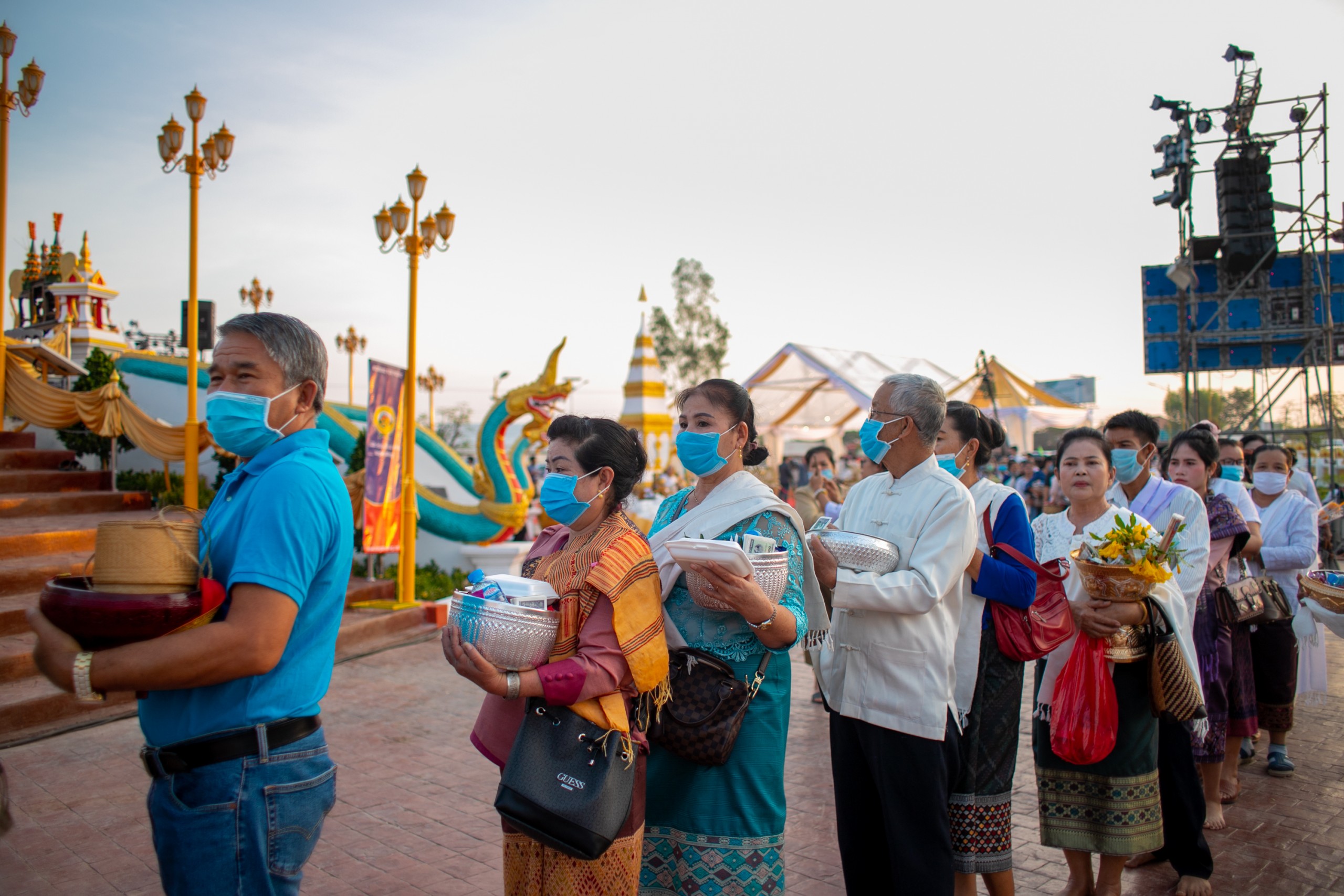
SINGAPORE, March 04, 2022 – The Lao PDR economy is expected to recover moderately in 2022, after two years of weak growth from 2020-2021 due to the pandemic. A further increase in the vaccination coverage beyond the current 50 percent is needed to provide greater immunity and protection to the population and allow for a careful and phased reopening of the economy. Enhanced fiscal management, accommodative monetary policy, and a careful phasing out of credit support measures are essential to a resilient economic recovery with macroeconomic stability. Structural reform efforts should focus on diversifying the economy beyond the resource and hydropower sectors to achieve more inclusive and sustainable growth. This is according to the preliminary assessment by the ASEAN+3 Macroeconomic Research Office (AMRO) after its virtual Annual Consultation Visit to Lao PDR from January 17 to 28, 2022.
The AMRO mission was led by Lead Economist, Dr. Seung Hyun (Luke) Hong. AMRO Director, Mr. Toshinori Doi, and Chief Economist, Dr. Hoe Ee Khor participated in the policy meetings. The discussions covered a wide range of macroeconomic and financial issues, focusing on fiscal and external sector vulnerabilities and imbalances, as well as achieving a more broad-based, inclusive, and sustainable growth.
“After two years of soft growth due to the pandemic, Lao PDR’s economy is projected to rebound by 3.9 percent in 2022, supported by continued expansion of power generation capacities, increase in agricultural export, and gradual resumption of tourism.” said Dr. Hong. “Amid lingering uncertainties in the pandemic evolution, vaccination should be ramped up as careful reopening of economic activities continues. Strong fiscal consolidation efforts need to continue while medium-term debt management, including contingent liabilities should be strengthened.”
Despite a large trade surplus from strong electricity and mineral product exports, and robust FDI inflows, overall balance of payments in 2021Q1-Q3 recorded a small deficit due to large external debt service burden, leading to a small decline in the gross international reserves.
While fiscal deficit narrowed, the debt to GDP ratio is estimated to increase to 70.4 percent as of end 2021 due to growth slowdown and increase in nominal value of external debt. Although the growth of government external debt has slowed, its high debt level has raised concerns on debt sustainability, especially with rising external debt service burden amid decreasing external buffer.
The recent publication of the first debt bulletin is a welcome achievement. The government should continue its efforts to enhance the transparency and predictability of its financing and debt management plan to improve the confidence of the market, and to secure sufficient and affordable financing sources.
Fiscal consolidation efforts should continue, with concrete action plan and targets, backed by the strong commitment of the government. Efforts to enhance revenue collection, broadening the tax base and upgrading tax/custom administration and compliance should be expedited; while efforts to enhance the efficiency of expenditure programs should be strengthened amid tightening spending.
Amid sluggish credit growth, monetary policy should remain accommodative to support economic recovery. More flexible exchange rate management will help to further narrow the FX gap and ease the mismatch in liquidity demand and supply in different currencies. More targeted policy lending programs, such as SME lending, should be strengthened to supplement the accommodative policy stance and support economic recovery.
Enhancing supervision and a well-phased withdrawal of pandemic measures are essential to maintain financial sector stability. The monitoring and supervision of banking sector should be further strengthened, while efforts to upgrade the regulatory framework should continue.
Increasing external debt service burden and high reliance on imports for various consumption and investment goods have created structural challenges for external account balances. Past strong growth based on a few capital-intensive sectors with limited progress in diversifying growth drivers also resulted in a narrow economic base. Policy efforts to diversify the economy is essential to achieve a more inclusive and sustainable economic recovery.
AMRO would like to express its appreciation to the Lao authorities and other counterparts for their excellent assistance and hospitality. The consultation visit has deepened AMRO’s understanding of the current macroeconomic and financial situation, macroeconomic policy as well as structural reforms in Lao PDR.

Top Row (from L to R): AMRO Director, Mr. Toshinori Doi, MOF Deputy Minister of Finance, H.E. Mr. Bounleua Sinxayvoravong, AMRO Chief Economist, Dr. Hoe Ee Khor
With participation from the AMRO Lao PDR team and Lao PDR MOF colleagues

Top Row (from L to R): AMRO Director, Mr. Toshinori Doi, BOL Deputy Governor, H.E. Mrs. Vathana Dalaloy, AMRO Chief Economist, Dr. Hoe Ee Khor
With participation from the AMRO Lao PDR team and BOL colleagues
About AMRO
The ASEAN+3 Macroeconomic Research Office (AMRO) is an international organization established to contribute towards securing the macroeconomic and financial stability of the ASEAN+3 region, which comprises 10 members of the Association of Southeast Asian Nations (ASEAN) and China; Hong Kong, China; Japan; and Korea. AMRO’s mandate is to conduct macroeconomic surveillance, support the implementation of the regional financial arrangement, the Chiang Mai Initiative Multilateralisation (CMIM) Agreement, and provide technical assistance to members.
